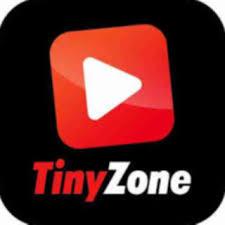In an era where subscription streaming services dominate mainstream media, a parallel ecosystem of unlicensed, free streaming platforms quietly thrives. Among these, tinyzones has emerged as a notable destination for viewers seeking immediate, cost-free access to movies and television shows. With a streamlined interface and a vast, frequently updated catalog, TinyZones appeals to users frustrated by subscription fees, regional restrictions, or delayed release windows. But behind the promise of “everything for free” lies a tangled web of legal, ethical, and security issues. This article offers an in-depth exploration of TinyZones—its origins, mechanics, user appeal, risks, industry response, and the broader implications for the future of content distribution.
The Origins and Evolution of TinyZones
Pirate Roots and Rapid Growth
tinyzone.tu debuted in the late 2010s as part of a wave of browser-based streaming sites that sought to outpace traditional peer-to-peer or download-based piracy services. Early pirate portals required special software or torrent clients; TinyZones stood out by delivering a Netflix-style experience directly in web browsers. By mirroring the clean, tile-based layouts of legitimate platforms, TinyZones quickly gained traction among viewers who wanted instant play without cumbersome downloads.
Domain Resilience and Mirror Networks
Because unlicensed streaming sites face constant legal pressure—domain seizures, takedown notices, ISP blocks—TinyZones operators built resilience through domain hopping and mirror networks. When one URL was disabled or seized, dozens of clones under alternate domain names sprang up, redirecting users seamlessly. This cat-and-mouse game between enforcement agencies and TinyZones kept the platform alive despite repeated legal challenges.
How TinyZones Works
Aggregator, Not Host
Unlike licensed services that host media on secure content delivery networks (CDNs), TinyZones functions as an aggregator. It does not store video files on its own servers. Instead, it indexes hyperlinks to third-party file hosts, cloud storage services, and public video-sharing sites where infringing copies have been uploaded. Automated crawlers and a volunteer contributor base scour the web for new releases, embedding those external links into TinyZones’s catalog.
Multiple Stream Mirrors
To guard against link rot and sudden takedowns, TinyZones offers multiple streaming sources per title. If one stream buffers endlessly or disappears, viewers can instantly switch to an alternate mirror. This redundancy enhances the user experience but also increases the attack surface for malicious actors deploying malware through different host networks.
Ad-Driven Monetization
With no subscription fees or paywalls, TinyZones relies entirely on advertising revenue. Visitors encounter banner ads, pop-ups, interstitial videos, and “click to continue” overlays throughout browsing and streaming. While some ads promote legitimate products, many originate from opaque ad networks specializing in malvertising—the practice of delivering malware through deceptive or compromised ads.
Why Viewers Flock to TinyZones
1. Zero Cost, Unlimited Access
The most obvious draw is cost: TinyZones is free. In markets where multiple subscription fees quickly add up, or where certain services simply aren’t available, TinyZones fills a gap by offering immediate access to both new releases and back catalogs at no charge.
2. Vast, Up-to-Date Library
TinyZones’s catalog spans thousands of titles—Hollywood blockbusters, indie films, anime series, foreign-language dramas, documentaries, and reality TV. New theatrical releases often appear mere weeks—or even days—after their cinema debut, outpacing the licensing windows of many legitimate platforms.
3. Barrier-Free Experience
No registration forms. No credit card information. No email verification. TinyZones removes friction, allowing anyone with a modern browser to start watching instantly. This anonymity particularly appeals to privacy-minded users or those reluctant to share personal data online.
4. Device and Region Agnosticism
Accessible through web browsers on desktops, laptops, tablets, and smartphones, TinyZones avoids the need for native apps (which themselves can carry malware). Because it relies on public links rather than geographic licensing controls, TinyZones offers a uniform library worldwide, bypassing the region locks that frustrate many international viewers.
Legal and Ethical Implications
Copyright Infringement
TinyZones distributes copyrighted works without permission from rights holders—studios, networks, independent creators. Under most jurisdictions, facilitating or distributing unlicensed content constitutes copyright infringement, exposing operators (and potentially uploaders) to civil liability and, in some cases, criminal penalties.
Operator Liability and Enforcement
Courts have repeatedly ruled that aggregators of infringing links can be held liable for enabling copyright violations. Rights holders frequently file injunctions, domain seizure orders, and takedown notices aiming to disable TinyZones domains. Although these actions disrupt service temporarily, operators routinely counter by launching new domains or spinning up mirror sites, sustaining the platform’s availability.
Ethical Cost to Creators
Beyond legal frameworks, piracy undermines the financial ecosystem that supports filmmaking and television production. Actors, writers, directors, crew members, and countless behind-the-scenes professionals rely on revenues from box office sales, licensed streaming, DVD/Blu-ray sales, and broadcast rights. When audiences opt for free, unlicensed streams, they erode the funding that makes future projects possible, potentially stifling creative risks and reducing industry diversity.
Security and Privacy Risks for Users
Malvertising: A Hidden Threat
TinyZones’s reliance on specialized ad networks makes it a magnet for malvertising—advertisements carrying hidden exploits. Even without clicking, visitors can be infected through drive-by download attacks that exploit unpatched browser vulnerabilities, installing ransomware, spyware, or cryptominers on their devices.
Phishing and Data Harvesting
Many pop-ups mimic legitimate system alerts or login prompts, coaxing users into entering personal information or credentials. Harvested data can be sold on illicit markets or used in identity theft and financial fraud schemes. With no transparent privacy policy or secure data practices, TinyZones offers zero assurance that visitor data isn’t being misused.
Unencrypted Connections and Eavesdropping
Because TinyZones streams content from various external hosts, some connections may lack HTTPS encryption. This absence of secure transport exposes users to man-in-the-middle attacks, where malicious actors intercept streams, inject ads or malware, or monitor viewing habits and network traffic.
Device Compromise and Persistent Threats
Sophisticated malware delivered via malicious ads can root Android devices, embed keyloggers on desktops, or establish persistent backdoors that remain hidden from antivirus software. Both desktop and mobile users risk long-term device compromise, requiring extensive remediation or even hardware replacement.
The User Experience: Balancing Convenience and Risk
| Pros | Cons |
|---|---|
| Free, Instant Streaming | Unreliable Streams—frequent buffering, low resolution, broken links |
| Expansive, Regularly Updated Library | Intrusive, Malicious Advertisements—pop-ups, redirects, malware |
| No Registration or Geo-Blocking | Legal Exposure—potential fines, service notices, or other consequences |
| Cross-Device Compatibility | No Support or Guarantees—links die with no recourse |
Industry and Regulatory Responses
ISP and DNS Blocking
In efforts to curb piracy, many Internet Service Providers deploy DNS filtering or IP-level blocks against known pirate domains, including TinyZones. When users attempt to access blocked addresses, they face error messages or are redirected to informational pages explaining the restriction.
Domain Seizures and Takedowns
Rights holders routinely pursue court orders to seize, suspend, or disable infringing domains. Though each legal action disrupts TinyZones temporarily, operators typically respond by registering replacement domains or re-establishing mirror networks in hours or days.
Public Education Campaigns
Film studios, streaming services, and digital rights organizations run awareness initiatives highlighting piracy’s legal, ethical, and security risks. By educating consumers about the dangers of malvertising, poor viewing quality, and compromised creative ecosystems, they aim to shift audiences toward legal alternatives over time.
Legal, High-Quality Alternatives
While pirate sites persist, viewers now enjoy a growing array of legitimate, low-barrier options:
-
Ad-Supported Free Tiers
Several well-known platforms offer free, ad-supported libraries of licensed movies and shows. Although selections may rotate and exclude the latest hits, the streaming experience remains secure, reliable, and legal. -
Public Library Digital Services
Public libraries often partner with digital video providers to grant cardholders free access to films, documentaries, and educational programming under fully legal licenses. -
Promotional Trials and Bundles
Most subscription services provide free trial periods, discounted student plans, or bundled packages that significantly reduce monthly costs—enabling viewers to access premium catalogs on the cheap. -
Public Domain and Creative Commons Content
Classic films, independent works, and projects released under open licenses are legally available on reputable platforms, offering cost-free entertainment without legal risk.
The Future of Pirate Streaming Platforms
TinyZones exemplifies the dynamic tug-of-war between consumer demand for immediate, free content and the entertainment industry’s efforts to protect intellectual property. Pirate operators constantly innovate—experimenting with peer-to-peer streaming protocols, decentralized hosting models, and encrypted delivery networks to evade enforcement. In response, rights holders and platforms pursue strategies such as:
-
Accelerated Global Release Windows: Reducing the gap between theatrical debut and digital availability to undercut piracy’s initial surge.
-
Expanded Ad-Supported Plans: Introducing free or low-cost tiers to capture price-sensitive segments.
-
Flexible Licensing Models: Offering micro-subscriptions, pay-per-view options, and bundled services to provide greater consumer choice.
Ultimately, as long as legitimate services fail to fully address consumer expectations for affordability, convenience, and global access, pirate platforms like TinyZones will continue to find an audience.
Conclusion
TinyZones stands at the forefront of a persistent challenge in digital entertainment: reconciling viewers’ appetite for free, instantaneous access with the legal, ethical, and security imperatives that sustain creative industries. Its polished interface and extensive catalog draw millions, yet behind the convenience lurk significant risks—malvertising, privacy breaches, legal liability, and the erosion of content funding. While enforcement efforts and consumer education chip away at piracy’s appeal, the most sustainable remedy lies in delivering accessible, affordable, and globally inclusive legal alternatives. As the streaming landscape evolves, balancing user convenience with respect for intellectual property and digital safety will define the future of entertainment.





